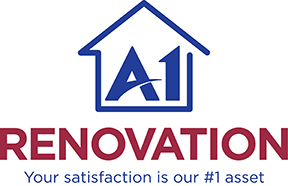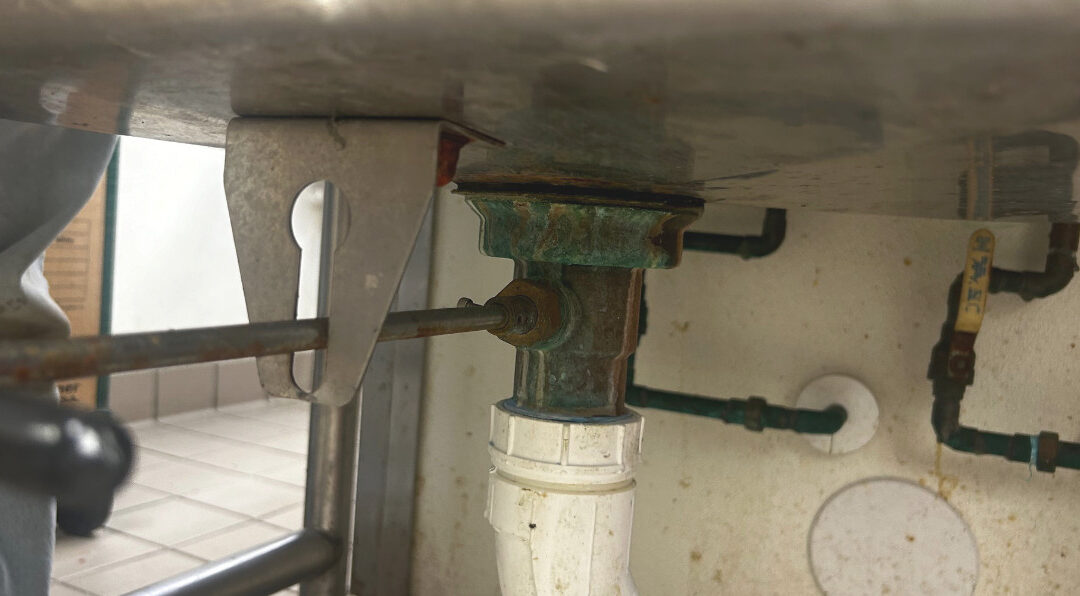We’ve worked with a national retail company for a decade, and much of that work involves maintenance needs and repairs to remain in health code compliance.
This particular project involved a commercial kitchen with mold issues around the sinks. Some of the mold was due to moisture that hadn’t been regularly cleaned properly, mostly around the moulding seams and wall. But the sink drain was also leaky, which led to serious rust on the pipes and floor underneath.
Here you can see a close up up the moldy seams that had affected nearby paint, with an after shot of all of it having been cleaned up:
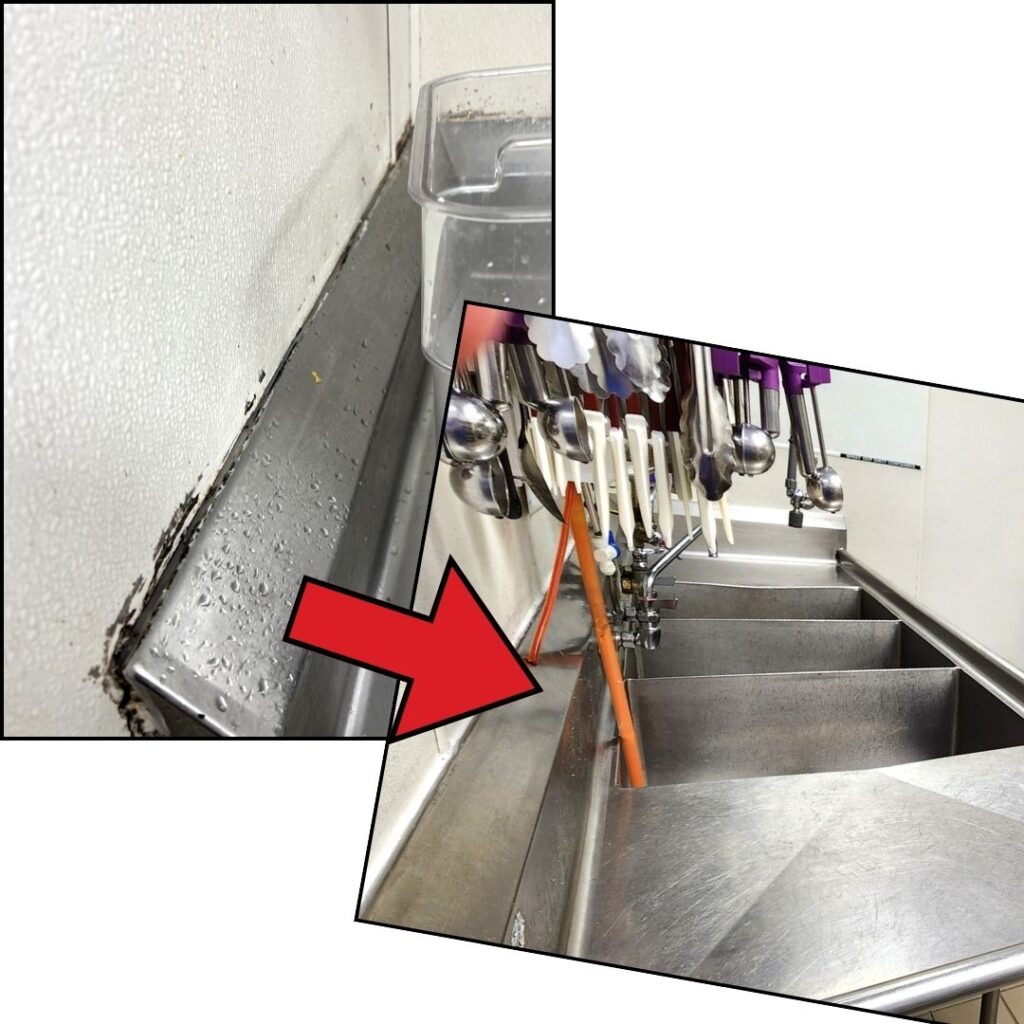
Next, here’s more of a frontal comparison.

Here’s a look at the underside of the sink, where you can see some notable corrosion on the pipes and drain.
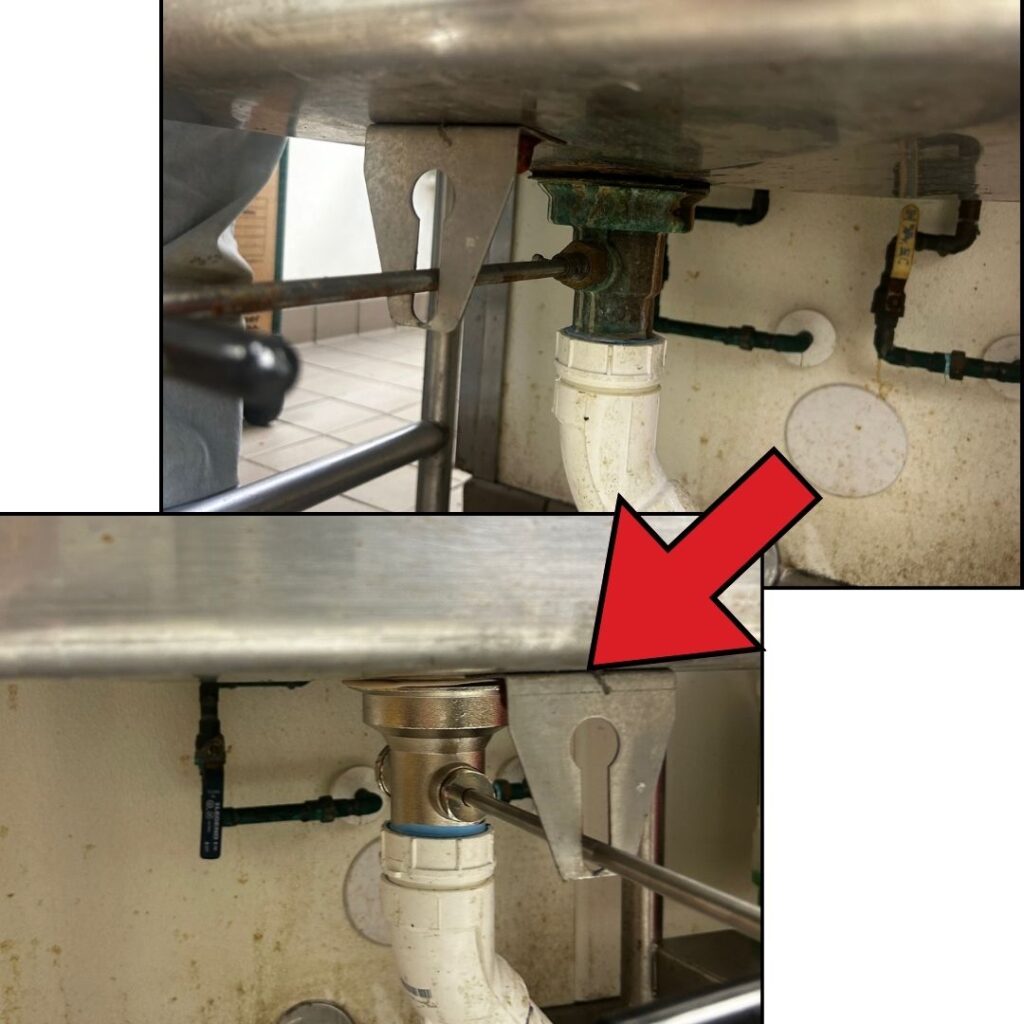
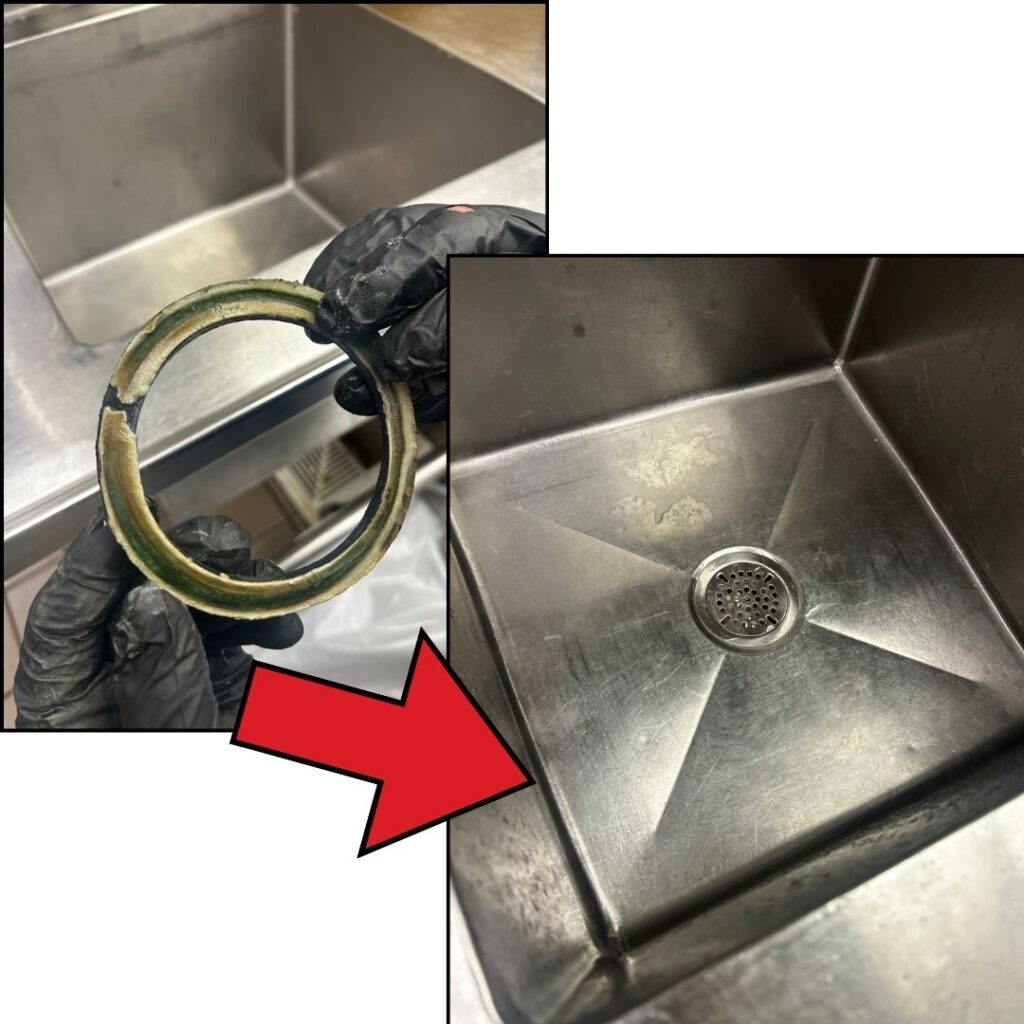
What caused this damage?
To a fair degree, this type of damage is caused by improper cleaning. The accumulation of mist, minor splashes, and other gunk coming off of dishes being cleaned in the sink can attract mold and eat away at steel surfaces.
Even “stainless” steel isn’t entirely rust-proof. That title simply means it won’t rust as readily as high carbon steel, or iron. If a metallic surface is wet often enough, and is allowed to stay way for long enough, corrosion happens.
The problem often circles in on itself, where once mold starts to grow the kitchen staff are reluctant to clean it because they find it gross, which only allows it to grow worse.
While commercial kitchens do indeed carry a sanitation score, the health department often does not visit an establishment very often. This is what makes it possible for these kinds of issues to exist for a while.
In this case, the health department did come by and mandated that they make repairs.
This post is part of a series where we share examples of projects we’ve worked on. Click the link if you’d like to see more of them.
